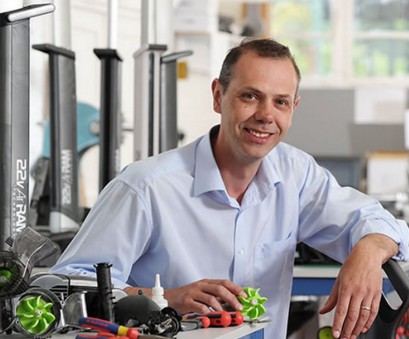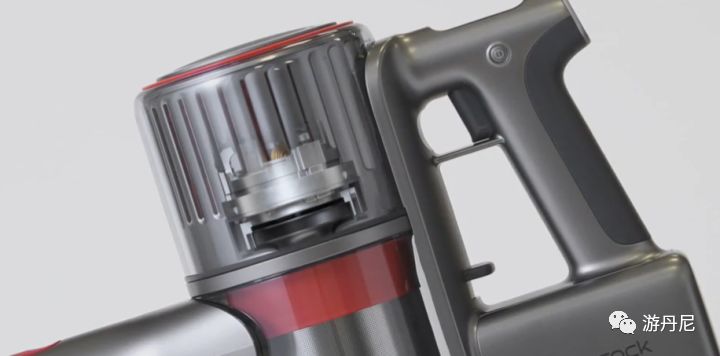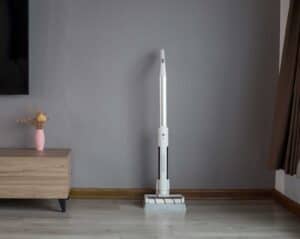One engineer, who’s been hailed as “the new Dyson” at Dyson’s British headquarters, has founded another company focused on vacuum cleaners, and their cordless vacuum cleaner is now outselling Dyson in Britain.
That company is Grey Technology (G Tech For short).

Nick Grey, founder of G Tech (pictured below), previously worked as research director for VAX, another well-known British vacuum cleaner brand. After 12 years at VAX, he left to start his own company at age 32, and decided to call it Grey Technology (or G Tech).
When he started his business in 2001, he only had 18,000 pounds saved up. The first product was an electrical sweeper that even used a wooden broom handle.
When I met Nick Grey at an exhibition he struck me as a shy engineer and I couldn’t have imagined that a few years later he would be a multi-millionaire.

Nick Grey
In 2015, G Tech had sales revenues of 66 million pounds (with an estimated 90 million pounds in 2017), with a profit of 12.5 million pounds, giving the company’s founder (and 90% shareholder) Nick Grey a personal net worth of 95 million pounds.
James Dyson is a perfect ideal for British engineers to strive for, but it’s very difficult to reach his level. Nick Grey is another example of engineering entrepreneurship, and having created a great company from nothing, some are calling him “the new Dyson”. One of my British engineer friends left Dyson to start his own brand, he said was inspired by Nick Grey.
Someone made this comparison between James Dyson and Nick Grey:

In the early days of G Tech, the company went through a difficult period as they produced their electric sweeper under the labeling of established international brands.
In 2002, some friends introduced G Tech to the American company Shark, who showed great interest in G Tech’s sweeper and wanted to market it through TV shopping.
Surprisingly, it turned out to be a wildly successful TV shopping product.
Nick Grey’s share of the sales revenue in the first month was $250,000, and at its peak the G Tech sweeper sold 450,000 units per month.
(Pictured: G Tech’s first vacuum cleaner, the SW01)
But competitors soon started to imitate them. As G Tech didn’t have a cost advantage sales growth was very slow for a while.
The real breakthrough for G Tech came with the launch of the cordless vacuum cleaner AirRam in 2012, bringing the company’s profit from 27,000 pounds in 2011 to 12 million pounds in 2016.

(G Tech’s first cordless vacuum cleaner, AirRam)
For a while, AirRam was the best selling cordless vacuum cleaner in the UK. When Dyson developed the DC59 cordless vacuum cleaner, they even made an advertisement to compare its functionality directly against the AirRam. The ad was then banned for misleading consumers.
(Dyson’ banned ad for the DC59)
There are three main reasons why the AirRam has sold so well in the UK:
1. Women find it a nightmare to drag vacuum cleaners from room to room, especially when they have to go up and down stairs. At only 3.5 kgs, the AirRam is very convenient, especially for female users.
(The picture shows Dyson’s upright vacuum cleaner, other brands have a similar shape.)
2. In 2012, most of the vacuum cleaners in the market still had power cords. Generally the cord is five meters long, and the plug has to be moved every time the distance exceeds the length of the cord. Storing vacuum cleaners is also a headache. So the cordless vacuum cleaner was a great new innovation that immediately ignited the market.
3. The AirRAM could be used for up to 40 minutes, and the charge time was only 4 hours. This was amazing back in 2012. Most of the handheld rechargeable vacuum cleaners back then used nickel-metal hydride or nickel-chromium batteries, and the charging time was more than 10 hours, while the use time was about 7-10 minutes with very weak suction.
(Popular electric vacuum cleaners in 2012)







